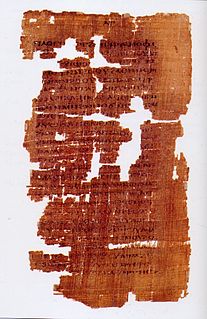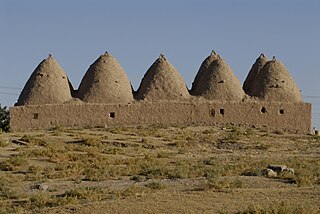 W
WOsroene was an ancient region and state in Upper Mesopotamia. The Kingdom of Osroene, also known as the "Kingdom of Edessa", according to the name of its capital city, existed from the 2nd century BCE, up to the 3rd century CE, and was ruled by the Abgarid dynasty. Generally allied with the Parthians, the Kingdom of Osroene enjoyed semi-autonomy to complete independence from the years of 132 BC to AD 214. Though ruled by a dynasty of Arab origin, the kingdom's population was mainly Aramean, with a Greek and Parthian admixture. In addition, the city's cultural setting was fundamentally Aramaic, alongside strong Parthian influences, though some Arab cults were also attested at Edessa.
 W
WAbgar V, called Ukkāmā, was the King of Osroene with his capital at Edessa.
 W
WThe Acts of Thaddeus is a Greek document written between 544 and 944 CE which purports to describe correspondence between King Abgar V of Edessa and Jesus, which results in Jesus' disciple Thaddeus going to Edessa.
 W
WḤarrān, also known as Carrhae, was a major ancient city in Upper Mesopotamia whose site is in the modern village of Harran, Turkey, 44 kilometers southeast of Şanlıurfa. The location is in the Harran district of Şanlıurfa Province.
 W
WCircesium, known in Arabic as al-Qarqisiya, was a Roman fortress city near the junction of the Euphrates and Khabur rivers, located at the empire's eastern frontier with the Sasanian Empire. It was later conquered by the Muslim Arabs in the 7th century and was often a point of contention between various Muslim states due to its strategic location between Syria and Iraq. The modern town of al-Busayra corresponds with the site of Circesium.
 W
WHimeria was a city and bishopric in the Roman province of Osrhoene, whose metropolitan see was Edessa.
 W
WThe Catechetical School of Edessa was a Christian theological school of great importance to the Syriac-speaking world. It had been founded as long ago as the 2nd century by the kings of the Abgar dynasty. In 363, Nisibis fell to the Persians, causing St. Ephrem the Syrian, accompanied by a number of teachers, to leave the School of Nisibis. They went to Edessa, where Ephrem took over the directorship of its school. Then, its importance grew still further. There were innumerable monasteries at Edessa housing many monks. Ephrem occupied a cell there, practicing the ascetic life, interpreting Holy Scripture, composing poetry and hymns and teaching in the school, as well as instructing young girls in church music.
 W
WThe School of Nisibis, for a time absorbed into the School of Edessa, was an educational establishment in Nisibis. It was an important spiritual centre of the early Church of the East, and like the Academy of Gondishapur, it is sometimes referred to as the world's first university. The school had three primary departments teaching: theology, philosophy and medicine. Its most famous teacher was Narsai, formerly head of the School of Edessa.